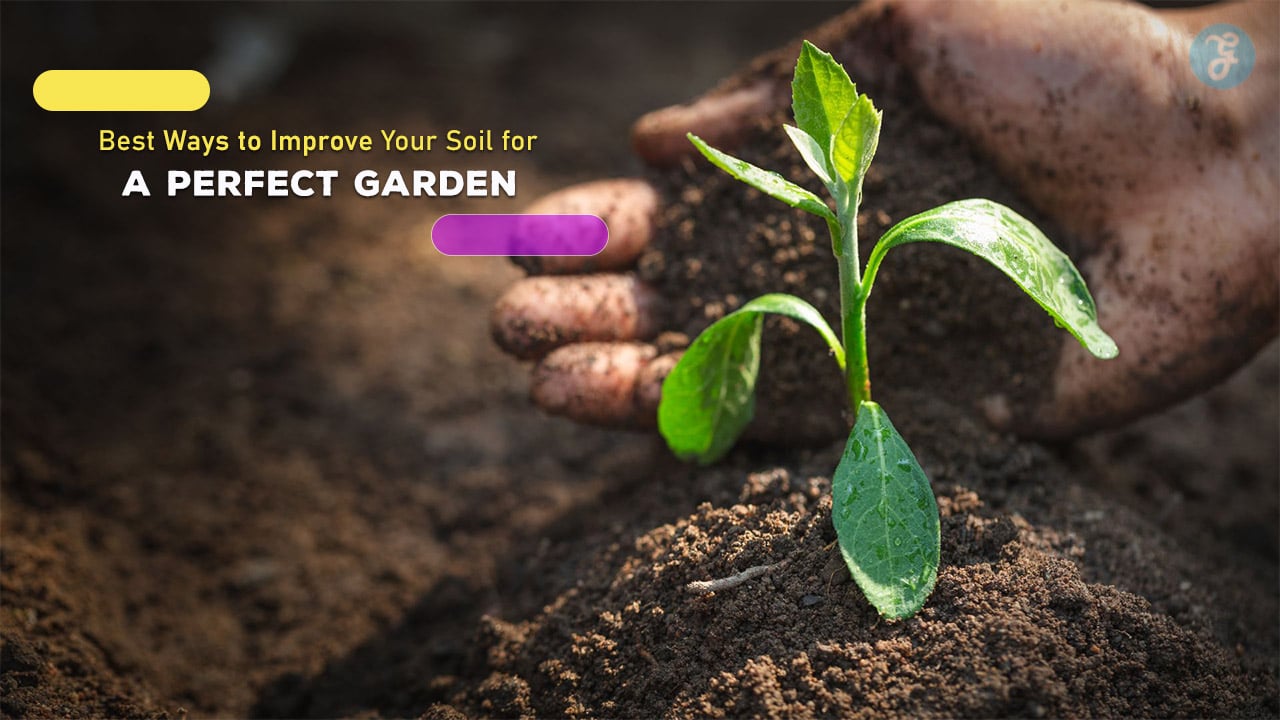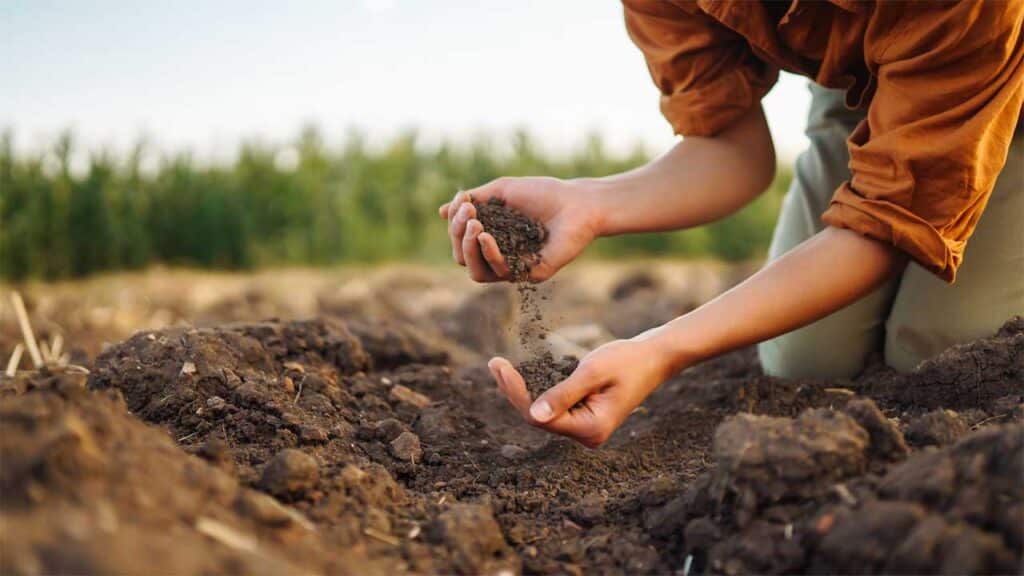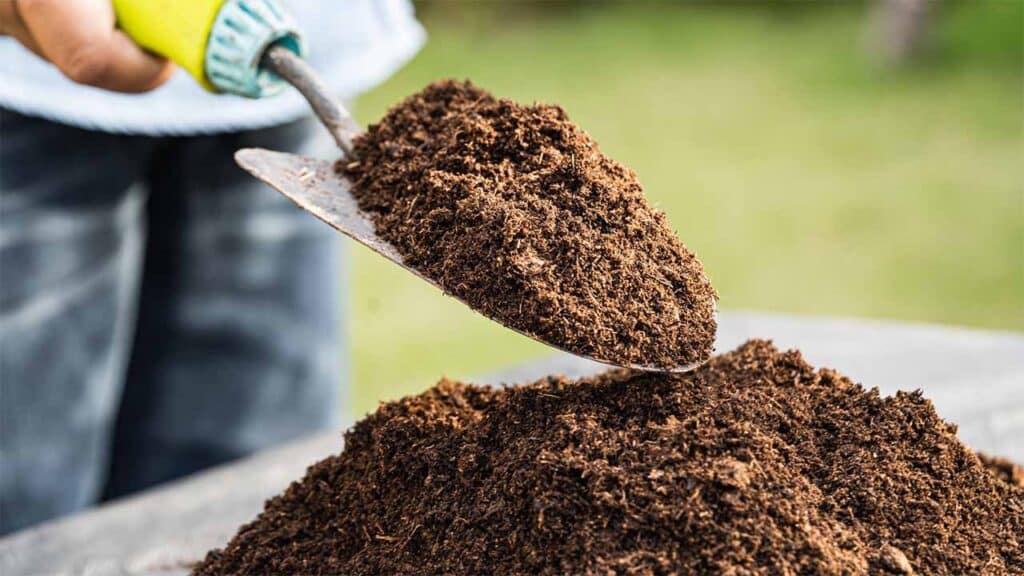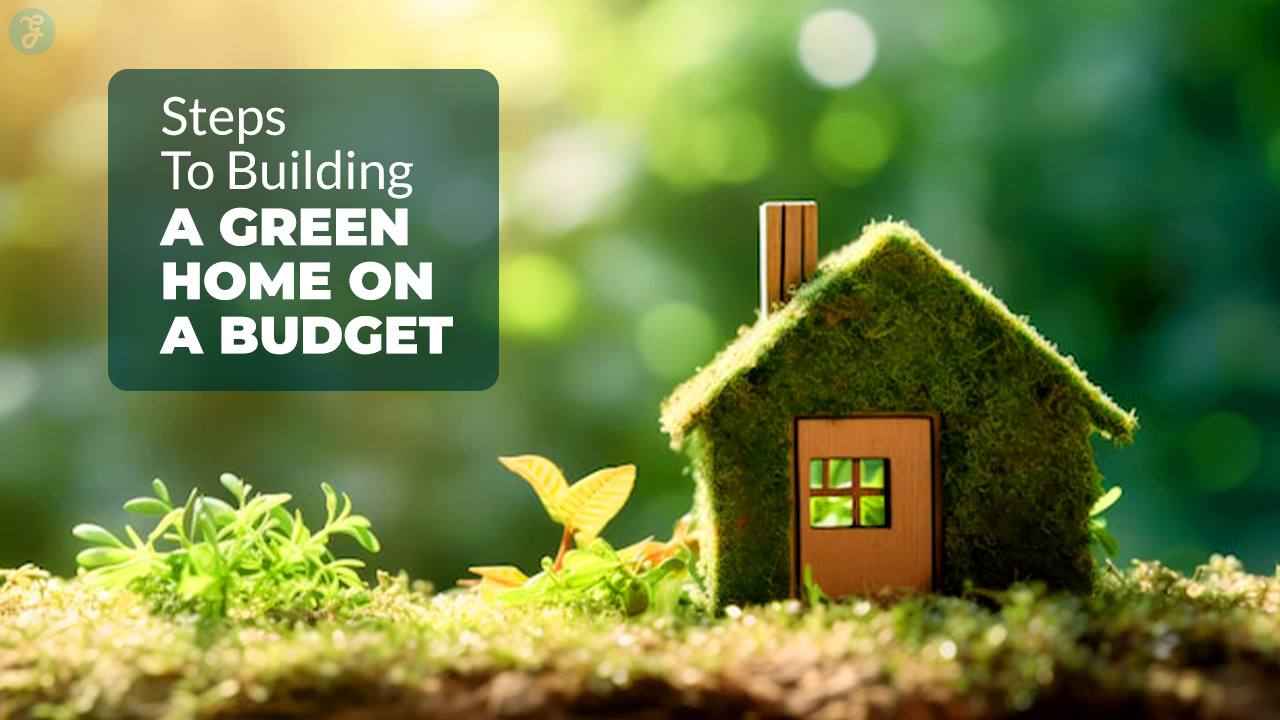Are you dreaming of a lush, vibrant garden bursting with healthy plants? The secret lies beneath your feet. Good soil is the foundation of any successful garden. You can transform even poor soil into a fertile growing medium with the proper techniques.
Improving your garden soil doesn’t have to be complicated or expensive. There are many simple ways to boost soil health and create the perfect environment for your plants to thrive.
From adding organic matter to balancing nutrients, you’ll find plenty of options to suit your garden’s needs. Explore effective methods to enhance soil and set the stage for gardening success.
1. Compost regularly
Composting is a great way to improve your garden soil. It’s easy to do and has many benefits for your plants.
You can make compost from kitchen scraps and yard waste. This turns trash into treasure for your garden. Mix fruit and vegetable peels, coffee grounds, and grass clippings in a bin or pile.
Adding compost to your soil helps plants grow better. It gives them nutrients and makes the soil easier for roots to spread. Your veggies and flowers will thank you!
Try to add compost to your garden a few times a year. Spring and fall are good times to do this. Spread a 2-3 inch-thick layer on top of your soil.
You can also buy compost if you don’t make your own. Garden centers usually sell it in bags. This is a quick way to get started with composting.
Remember to keep your compost moist but not too wet. Turn it every few weeks to help it break down faster. Soon, you’ll have rich, dark compost to feed your garden.
2. Use cover crops
Cover crops are plants you grow to protect and improve your soil. They’re a great way to boost your garden’s health when it’s not growing vegetables.
You can plant cover crops in the fall after your harvest. They’ll grow over winter and early spring. Popular options include clover, rye, and vetch.
These plants help in many ways. They stop soil from washing away in rain or wind. Their roots break up hard soil, making it easier for other plants to grow later.
Cover crops also add nutrients to your soil. When you dig them into the ground in spring, they feed helpful soil creatures. This makes your soil richer for your next crop.
To use cover crops, scatter seeds over bare soil in your garden. Rake them in lightly and water well. In spring, cut them down and mix them into the soil before planting your vegetables.
Using cover crops can lead to better harvests. Your plants will grow stronger and produce more food. It’s an easy way to improve your garden’s soil health year-round.
3. Add aged manure
Aged manure is a garden superstar. It boosts soil health and helps plants grow strong. You can find it at garden centers or from local farms.
Before using manure, ensure it’s aged for at least six months. Fresh manure can burn plants and carry harmful bacteria. Aged manure is safer and more functional.
Mix aged manure into your soil before planting. Use about 1 inch of manure for every 3 inches of soil. This improves soil texture and adds nutrients.
Different types of manure have other benefits. Cow and horse manure are good all-purpose options. Chicken manure is high in nitrogen but should be used sparingly.
Spread a thin layer of aged manure around existing plants as a top dressing. This feeds the soil slowly over time. Be careful not to let it touch plant stems.
Using aged manure can make your garden more eco-friendly. It reduces the need for chemical fertilizers. Your plants will thank you with better growth and yields.
Remember to wear gloves when handling manure. Always wash your hands after working with it. With these simple steps, you can harness the power of aged manure for a thriving garden.
4. Apply mulch
Mulch is a gardener’s secret weapon. It helps your soil in many ways. You can use different types of mulch in your garden.
Organic mulches are great choices. These include wood chips, straws, and shredded leaves. They break down over time and add nutrients to your soil.
Spread mulch around your plants about 2-3 inches deep. Don’t pile it up against plant stems or tree trunks. This can cause rot.
Mulch keeps the soil moist and cool. It also stops weeds from growing. Your plants will thank you for the extra care.
Apply mulch in spring or fall. In cold areas, wait until the ground freezes before adding winter mulch. This protects plant roots from frost damage.
Avoid using rocks as mulch. They heat up fast in the sun and can harm your plants. Stick to organic options for the best results.
Refresh your mulch every year or two. As it breaks down, it feeds your soil. This means healthier plants and less work for you in the long run.
5. Plant nitrogen-fixing crops
Nitrogen-fixing plants can work wonders for your garden soil. These unique plants team up with bacteria to pull nitrogen from the air and add it to the soil.
Some great options for your garden include peas, beans, and peanuts. These plants improve your soil and give you a tasty harvest.
Clover is another top choice for fixing nitrogen. You can plant it as a ground cover or mix it into your lawn. It’s challenging and helps keep weeds away, too.
Alfalfa is a powerhouse nitrogen fixer. It’s often used as animal feed, but you can also grow it to boost soil health.
When you plant these crops, you’re feeding your soil naturally. This means you’ll need less fertilizer, and your plants will grow stronger.
After harvesting, leave the roots in the ground. They’ll break down and release even more nitrogen into your soil.
You can also use these plants as “green manure.” This means growing them to improve the soil and turning them under before they flower.
By adding nitrogen-fixing crops to your garden rotation, you’re setting up your soil for long-term success. Your future plants will thank you!
6. Use worm castings
Worm castings are a gardener’s secret weapon. They’re packed with nutrients and beneficial microbes that can supercharge your soil.
What are worm castings? Simply put, they’re worm poop. But don’t let that gross you out—they’re excellent for your plants!
You can add worm castings directly to your garden beds. Mix them into the top few inches of soil before planting. A thin layer works wonders.
For potted plants, mix worm castings into your potting soil. About 20-30% castings are a good ratio. Your plants will thank you.
Want to make a liquid fertilizer? Steep some castings in water overnight. This “worm tea” is great for watering or foliar spraying.
Worm castings improve soil structure, too. They help with drainage and moisture retention. Your soil will be healthier overall.
Are you worried about using too much? Don’t be. Unlike chemical fertilizers, it’s hard to overdo it with worm castings. They’re gentle on plants.
You can buy worm castings or make your own with a worm bin. Either way, your garden will benefit from this natural plant superfood.
7. Test soil pH
Testing your soil’s pH is critical for a great garden. Soil pH affects how plants take up nutrients. Most plants like slightly acidic soil with a pH between 6.0 and 7.0.
You can test soil pH at home or send it to a lab. Mix soil with distilled water and add white vinegar for a quick home test. If it bubbles, your soil is alkaline.
Another easy method is using red cabbage. Boil cabbage in water, then mix the purple liquid with the soil. If it turns pink, your soil is acidic. If it stays purple, it’s neutral. Green means alkaline.
Use a soil pH test kit from a garden store for more precise results. These kits are simple to use and give you a number on the pH scale.
Take samples from different parts of your garden to get the most accurate reading. Mix them before testing. This gives you a better picture of your overall soil pH.
Once you know your soil pH, you can adjust it if needed. Add lime to raise the pH or sulfur to lower it. Small changes can make a big difference in how well your plants grow.
8. Incorporate organic fertilizers
Organic fertilizers can make your soil rich and healthy. They come from natural sources like plants and animals. These fertilizers feed your plants and improve soil structure.
You can use many types of organic fertilizers. Compost is a great option. It’s made from decomposed plant matter and food scraps. You can make it at home or buy it from garden stores.
Manure is another good choice. Cow, chicken, and horse manure work well. Make sure it’s aged before using it. Fresh manure can burn plants.
Worm castings are super nutritious for your soil. They are the waste that earthworms have left behind. You can buy them or make your own with a worm bin.
Bone meal adds phosphorus to your soil. It helps plants grow strong roots. A blood meal is high in nitrogen. It’s excellent for leafy plants.
Fish emulsion is a liquid fertilizer made from fish parts. It smells strong but works fast. Seaweed fertilizer is another liquid option. It’s packed with trace minerals.
When using organic fertilizers, follow the instructions on the package. Too much can harm your plants. Start with small amounts and increase as needed.
Mix these fertilizers into your soil before planting. You can also add them around existing plants—water well after applying to help nutrients soak in.
9. Practice crop rotation
Crop rotation is an intelligent way to keep your garden healthy. It means planting different types of vegetables in the same spot each year. This simple trick can make a big difference in your garden’s success.
Changing what you grow can prevent pests and diseases from building up in the soil. When you move plants around, bugs and germs that, like certain vegetables, can’t find them as easily.
Rotating crops also helps your soil stay rich. Different plants use different nutrients. Switching things up gives the soil a chance to recover what it lost.
You can group plants by family when planning your rotation. For example, tomatoes and peppers are in the same family. Don’t plant them in the same place two years in a row.
A good rotation plan can last 3-4 years. Keep notes on what you plant where. This will help you remember and plan for future seasons.
Try to follow heavy feeders with light feeders or soil builders. Beans and peas add nitrogen to the soil, which helps other plants later.
Crop rotation can lead to better harvests. Some gardeners see 10-25% more vegetables when they rotate their crops. It’s an easy way to grow more food without extra work.
10. Utilize raised beds
Raised beds can transform your garden. They give you control over your soil quality. You can fill them with the perfect mix for your plants.
Raised beds help with drainage. Water flows through them better than in-ground gardens. This keeps roots from getting too wet.
You can garden earlier in spring with raised beds. The soil warms up faster. This means you can plant sooner.
Weeds are easier to manage in raised beds. There’s less space for them to grow. You can reach all parts of the bed easily to pull them out.
Raised beds are great for small spaces. You can grow more in less area. They also look neat in your yard.
You can customize the soil in each bed. Different plants need different soil types. With raised beds, you can make each one perfect.
Raised beds are more accessible on your back. You don’t have to bend as much to tend your plants. This makes gardening more comfortable.
You can build raised beds from many materials. Wood, stone, or metal all work well. Choose what fits your style and budget.
Fill your raised beds with a mix of topsoil, compost, and organic matter. This creates a rich environment for your plants to thrive.
11. Install proper irrigation
Good soil needs the right amount of water. Installing an irrigation system can help you water your garden better. It saves time and makes sure your plants get enough water.
Drip irrigation is an excellent choice for many gardens. It uses less water than sprinklers. Small tubes bring water right to the roots of your plants. This helps stop weeds from growing.
You can set up a simple drip system yourself. Start by connecting a hose to your water source. Then, lay out tubes where you want the water to go. Put emitters near your plants to let water out slowly.
Sprinklers should be in more extensive areas included. They can cover more ground quickly. Just be careful not to overwater. Too much water can wash away nutrients from your soil.
Timers are helpful for any irrigation system. They turn the water on and off automatically. This way, your plants get water even when you’re not home.
Remember to check your system often. Look for leaks or clogged parts. Fix any problems right away to keep your soil and plants healthy.
12. Add bone meal
Bone meal is a great way to boost your soil’s nutrients. It’s made from ground-up animal bones and adds phosphorus and calcium to your garden.
You can use bone meal when planting new bulbs or flowers. Mix about one tablespoon into the soil for each plant. For bigger plants, use two tablespoons.
For gardens you already have, sprinkle bone meal on top of the soil. Use about 1 cup for every 10 square feet. Then, water it lightly to help it soak in.
Bone meal works slowly, so add it in fall or early spring. This gives it time to break down before plants need the nutrients most.
Be careful not to use too much bone meal. Too much phosphorus can block other nutrients. Stick to the amounts on the package label.
Bone meal is best for soils low in phosphorus. If you’re not sure, get your soil tested first. This will tell you if bone meal is suitable for your garden.
13. Use green manure
Green manure is a simple way to boost your soil’s health. It involves growing specific plants to improve the ground. You don’t eat these plants. Instead, you dig them back into the soil.
Common green manure crops include clover, peas, and rye. These plants add nutrients and organic matter to your garden. They also help prevent soil erosion and suppress weeds.
To use green manure, start by preparing your soil. Remove any weeds and loosen the earth. Then, sow the seeds of your chosen green manure crop. Water them well and let them grow.
When the plants are about to flower, it’s time to dig them in. Cut them down and mix them into the top layer of soil. This adds valuable nutrients and improves soil structure.
Green manures are great for resting garden beds between crops. They can fix nitrogen in the soil, which helps future plants grow. You can use them before planting heavy feeders like tomatoes or cabbage.
Remember to choose the suitable green manure for your needs. Some work better in warm weather, while others suit cooler seasons. Pick ones that match your climate and garden schedule.
14. Avoid chemical pesticides
Chemical pesticides can harm your garden soil. They kill both terrible bugs and good ones. This upsets the natural balance in your garden.
Instead, try natural ways to control pests. You can plant marigolds to keep aphids away. They also bring helpful ladybugs to your garden.
You can use food-grade diatomaceous earth. Put it around your plants to stop crawling bugs. It’s safe for humans but challenging for insects.
Building healthy soil helps prevent pest problems. Add compost and mulch to your garden. This makes your plants more assertive and better able to fight off pests independently.
Try organic mulches like straw or wood chips. They keep moisture in the soil and stop weeds. This helps your plants grow better without chemicals.
You can also add worms to your soil. They make the dirt looser and add nutrients. This helps your plants stay healthy without pesticides.
15. Introduce beneficial insects
Bringing helpful bugs to your garden can boost your soil health. These tiny critters work hard to keep pests in check and help your plants grow strong.
Ladybugs are great allies in your garden. They munch on aphids and other tiny pests that can damage your plants. You can attract them by planting flowers like marigolds or daisies.
Ground beetles are another type of bug you want around. They eat slugs, snails, and caterpillars that might harm your garden. Leaving some leaf litter or mulch gives them places to hide.
Soldier beetles are also suitable for your garden. They feed on grasshopper eggs and soft-bodied insects. You can bring them in by growing plants like goldenrod or zinnias.
Provide water, food, and shelter to make your garden welcoming for these helpful insects. A mix of different plants will attract various beneficial bugs to your garden.
By inviting these insects, you’ll rely less on harmful chemicals. Your plants will be healthier, and your soil will improve. It’s a simple way to boost your garden’s overall health.
16. Incorporate biochar
Biochar is a great way to boost your soil’s health. It’s a type of charcoal made from plant matter. You can add it to your garden to improve the soil.
Biochar helps your soil hold more water and nutrients. This means your plants can grow better. It also makes the soil airier, which is good for roots.
Mix biochar into your soil before planting. Spread it on top and work it in about 5 inches deep. For poor soil, use about a quarter pound per square foot.
Before adding biochar, it’s best to “activate” it. Mix it with compost or soak it in compost tea. This helps it work better in your soil.
You can also add biochar to existing gardens. Just sprinkle it on top and mix it into the top 6 inches of soil. Do this when you’re planting or refreshing your beds.
Biochar keeps working in your soil for years. It helps your plants grow stronger and produce more. Plus, it’s good for the environment.
17. Use mycorrhizal fungi
Mycorrhizal fungi can be a game-changer for your garden soil. These tiny organisms form partnerships with plant roots, helping them absorb more nutrients and water.
You can add mycorrhizal fungi to your soil in several ways. One method is to mix granular inoculant directly into the planting hole when putting in new plants.
Another option is to apply a liquid solution of mycorrhizal fungi to plant roots during transplanting. This ensures the fungi make direct contact with the roots.
You can sprinkle granular mycorrhizal products around the base and water them in for existing plants. The fungi will gradually work their way down to the root zone.
Using mulch in your garden can also encourage natural mycorrhizal growth. It protects the soil surface and creates a friendly environment for these beneficial fungi.
When choosing mycorrhizal products, look for ones that contain a mix of different fungal species. This gives your plants the best chance of forming successful partnerships.
Remember, mycorrhizal fungi work best in soils that aren’t overly fertilized. Too much phosphorus can reduce their effectiveness.
By using mycorrhizal fungi, you’re giving your plants a natural boost. They’ll be better equipped to handle stress and grow strong, healthy roots.
18. Plant companion plants
Companion planting can boost your garden’s health and productivity. Certain plants grow better together and help each other thrive.
Try planting basil near your tomatoes. Basil repels pests that bother tomatoes and may even improve their flavor.
Marigolds make great companions for many vegetables. Their strong scent drives away harmful insects. Plant them around your garden beds.
Beans and corn work well together. Beans add nitrogen to the soil, which corn needs to grow. The tall corn stalks give beans support to climb.
Carrots and onions are a good pair. Onions keep carrot flies away. In return, carrots help loosen the soil for onions to grow.
Plant dill near cucumbers. Dill attracts beneficial insects that eat pests. It also enhances cucumber growth.
Try growing garlic near roses. Garlic’s strong smell repels aphids and other pests that often attack roses.
Remember to research which plants work well together in your climate. Some combinations may vary based on your local conditions.
By planting companions, you can naturally improve soil health and plant growth. This method reduces the need for chemical fertilizers and pesticides.
19. Avoid over-tilling
Tilling your garden soil can be helpful, but doing it too much causes problems. Over-tilling breaks down soil structure and harms helpful organisms. It can lead to compacted soil that doesn’t drain well.
Only till when you need to, like when starting a new garden bed. Even then, be gentle. Use a garden fork or broad fork instead of a rototiller. These tools are less disruptive to the soil.
Don’t till when the soil is too wet or too dry. Wait until it’s just moist enough to crumble in your hand. This prevents clumping and over-compaction.
Try no-till methods to improve your soil without disrupting it. Add compost and mulch to the soil surface. Let worms and microbes work it in naturally over time.
If you must till, do it sparingly – no more than once a year. Focus on other ways to care for your soil, like adding organic matter and using cover crops. Your garden will thank you with healthier plants and better harvests.
20. Incorporate seaweed extracts
Seaweed extracts can work wonders for your garden soil. These natural products are packed with nutrients and minerals that plants love.
You can find seaweed extracts at most garden stores. They come in liquid or powder form. Mix them into your soil before planting or use them as a foliar spray.
Seaweed extracts boost plant growth and health. They contain nitrogen, potassium, and other essential elements. These help plants develop strong roots and lush foliage.
Using seaweed in your garden also improves soil structure. It adds organic matter and helps retain moisture. This creates a better environment for beneficial microbes.
Seaweed extracts can make plants more resistant to stress. They help your garden withstand drought, frost, and pests better.
To use liquid seaweed, dilute it with water according to package instructions. Apply it to the soil around your plants or spray it on leaves.
For powdered seaweed, sprinkle it over your soil and mix it in. Add it to your compost pile for an extra nutrient boost.
Regular use of seaweed extracts can lead to healthier, more productive plants. It’s a simple way to give your garden a natural advantage.
Understanding Soil Composition
Good soil is the key to a thriving garden. Knowing what’s in your soil helps you make intelligent plant choices.
The Role of Organic Matter
Organic matter is vital for healthy soil. It feeds plants and helps the soil hold water. You can add compost or aged manure to boost organic matter. These break down over time, giving nutrients to your plants. They also make soil looser, which helps roots grow better.
Worms and bugs like organic-rich soil. They create air pockets that roots need. As they move, they mix the soil, spreading nutrients around. This is good for your whole garden.
Soil Texture and Structure
Soil texture affects how water and nutrients move. Sand, silt, and clay are the main parts of soil. Sand feels gritty. The silt is smooth like flour. Clay is sticky when wet.
Most gardens do best with a mix of these. You can test your soil by squeezing a damp handful. If it falls apart, it’s sandy. If it stays in a ball, it’s clay-heavy. The best soil forms a loose ball that breaks easily.
A good structure means the soil has clumps and spaces. This lets air and water move freely. You can improve structure by not walking on your garden beds. Adding organic matter also helps create good structure over time.
Managing Soil Health
Good soil health is vital to a thriving garden. It helps plants grow strong and resist pests and diseases. Let’s look at two important ways to keep your soil in shape.
Improving Soil Aeration
Soil aeration is crucial for plant roots to breathe and grow. Here are some tips to boost aeration:
- Avoid walking on garden beds to prevent compaction
- Use a garden fork to make holes in the soil surface
- Add organic matter like compost or leaf mold
- Plant cover crops with deep roots to break up compacted soil
- Use raised beds to prevent soil from getting too packed down
Good aeration helps water and nutrients move through the soil. It also makes it easier for roots to spread out and grow deep.
Balancing Soil pH
Soil pH affects how well plants can take up nutrients. Most garden plants have a pH between 6.0 and 7.0. Here’s how to manage pH:
- Test your soil pH with a home kit or send a sample to a lab
- Add lime to raise pH if the soil is too acidic
- Use sulfur to lower pH if the soil is too alkaline
- Retest after making changes to check the results
Some plants, like blueberries, prefer more acidity; others, like asparagus, like it is more alkaline. Match your soil pH to what you want to grow for the best results.
Enhancing Nutrient Availability
Good soil needs the proper nutrients to help plants grow strong. You can boost these nutrients in two main ways: cover crops and composting. Let’s look at how each method works.
Using Cover Crops
Cover crops are plants you grow to improve your soil. They help in many ways:
- Add nutrients: Some cover crops, like clover, take nitrogen from the air and put it in the soil.
- Stop erosion: Their roots hold soil in place when it rains.
- Break up hard soil: Deep roots make it easier for other plants to grow later.
- Block weeds: They crowd out harmful plants that steal nutrients.
To use cover crops:
- Pick the right type for your needs
- Plant them after your main crop is done
- Cut them down before they make seeds
- Mix them into the soil or leave them on top as mulch
Benefits of Composting
Composting turns waste into food for your plants. It’s easy and helps your garden a lot:
- Adds nutrients: Compost has all the excellent stuff plants need to grow.
- Improves soil structure: It makes soil loose and easy for roots to grow.
- Holds water: Compost helps soil keep water for plants to use.
- Feeds good bugs: It makes the soil full of life and helps plants.
To make compost:
- Mix green stuff (like grass) with brown stuff (like leaves)
- Keep it damp but not wet
- Turn it every few weeks
- Use it when it looks like dirt and smells good
Using these methods, you can make your soil rich and your plants happy.
Final Thoughts
Nurturing healthy soil is the foundation of a thriving garden.
The 20 strategies outlined in this article provide a comprehensive approach to improving your garden’s soil, from simple composting and mulching to more advanced methods like incorporating biochar and mycorrhizal fungi.
Remember that soil improvement is an ongoing process, not a one-time task. By consistently applying these methods, you’re investing in your garden’s long-term health and productivity.
Each technique creates a balanced, nutrient-rich environment where plants can flourish.














































